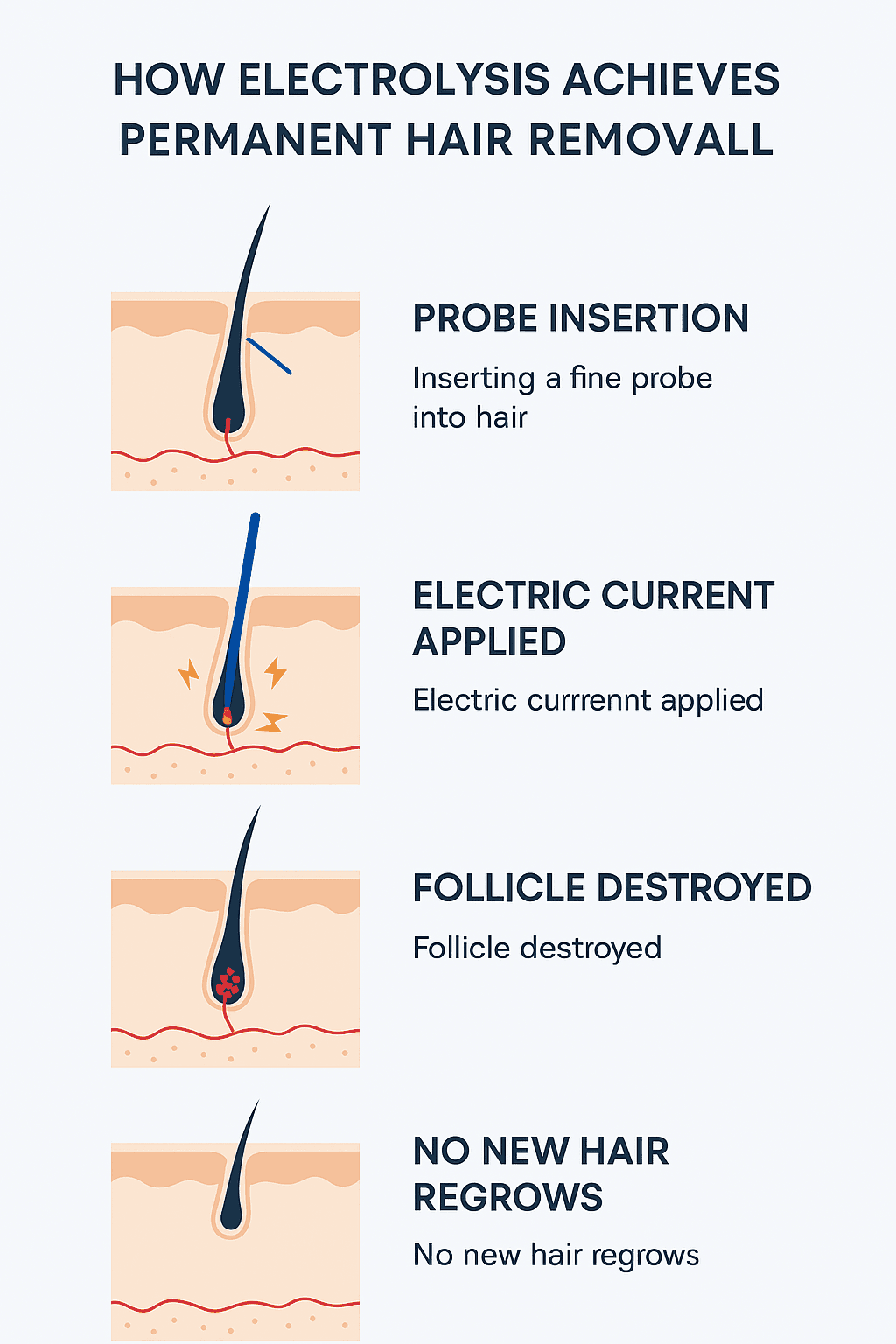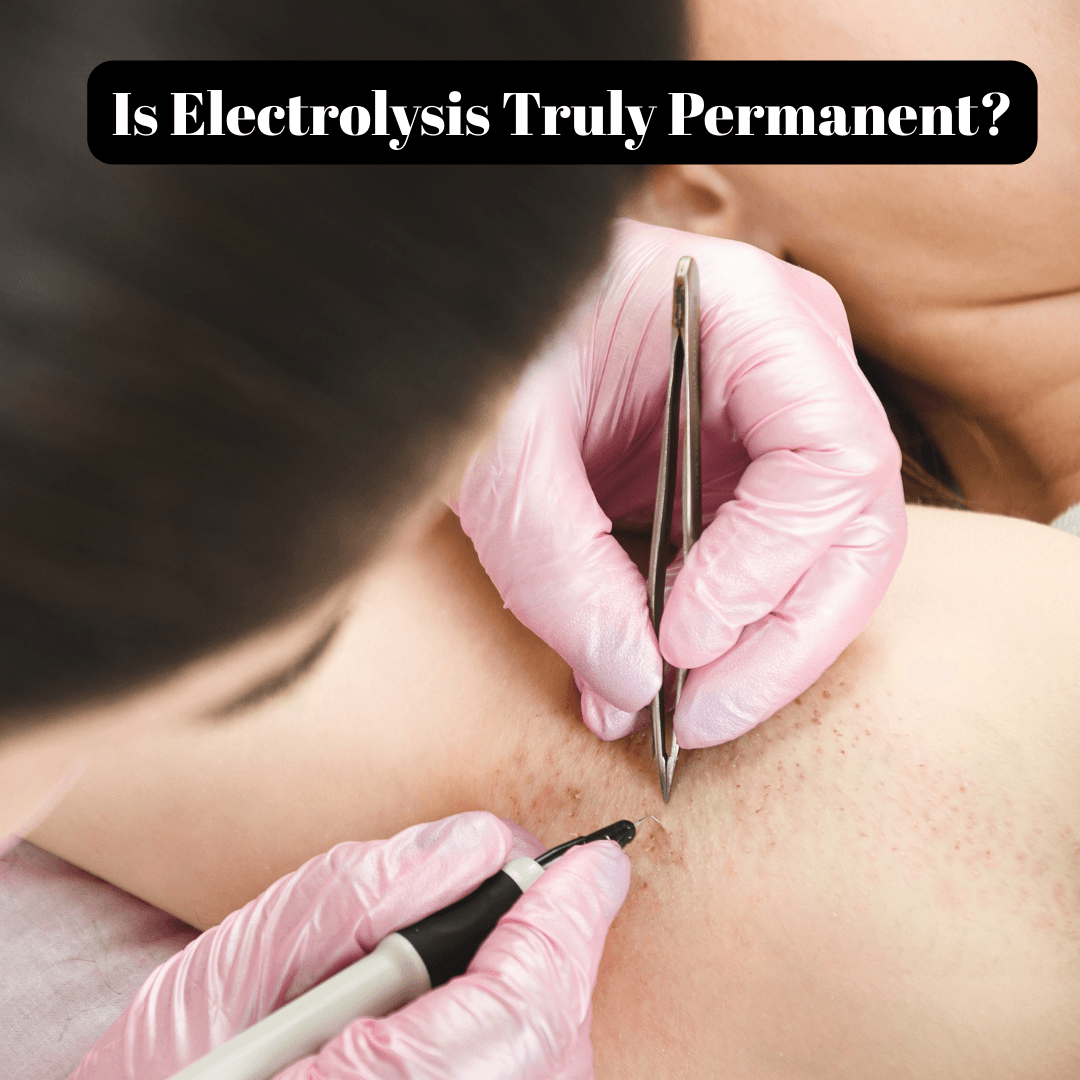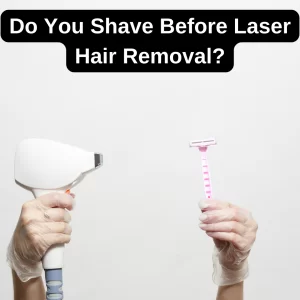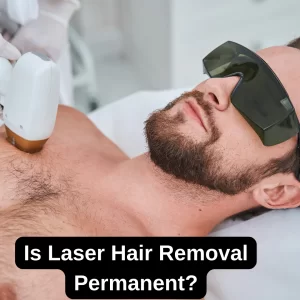Electrolysis is frequently praised as the only FDA-approved method for permanent hair removal. But what does “permanent” really mean when it comes to body hair—and does electrolysis live up to this promise in every case? Whether you’re exploring alternatives after unsuccessful laser treatments or searching for a method that works across all hair and skin types, this comprehensive guide will help clarify the long-term reality of electrolysis.
What Does “Permanent Hair Removal” Actually Mean?
The term permanent can be misleading if taken literally. According to the U.S. Food and Drug Administration (FDA), permanent hair removal refers to the long-term, stable reduction in the number of hairs that regrow after a complete treatment series—not necessarily the absolute elimination of every single hair forever.
In electrolysis, this is achieved by inserting a fine probe into the hair follicle and applying a small electric current to destroy the follicle’s growth center. When done correctly, that specific follicle loses its ability to regenerate hair.
How Electrolysis Permanently Disables Hair Follicles

Electrolysis uses targeted electrical currents to destroy individual hair follicles. There are three primary techniques used:
- Thermolysis: Heat-based destruction of follicle tissue
- Galvanic Electrolysis: A chemical reaction that dissolves follicle components
- Blend Method: A combination of both heat and chemical action for higher efficacy
Since each follicle is treated individually, the results can be incredibly precise, especially in small or hormonally affected areas. The surrounding skin remains unaffected when performed by a skilled practitioner.
While electrolysis is FDA-recognized and widely practiced, not all devices or clinics operate under proper regulatory compliance. In March 2024, the FDA issued a warning letter to a manufacturer over violations related to electrolysis device quality and labeling practices, emphasizing the importance of choosing licensed providers and verified equipment.
View the official FDA warning letter
Key Factors That Ensure Permanency
Not all electrolysis sessions are equal. To achieve truly permanent results, several conditions must be met:
- Follicles should be treated in the anagen (active growth) phase, when they are most vulnerable to destruction.
- Correct energy levels must be used, ensuring the follicle is fully disabled without harming surrounding tissue.
- The practitioner’s experience matters. Licensed electrologists trained in follicle targeting can ensure consistent, effective results.
- Consistency is critical. Skipping sessions or allowing long gaps can result in untreated follicles reactivating later.
Can Hair Grow Back After Electrolysis?
Yes—but not from a correctly treated follicle. If regrowth appears, it’s likely due to:
- Previously untreated follicles that were dormant during earlier sessions
- Hormonal fluctuations, such as pregnancy, PCOS, or menopause
- Technique errors, where the follicle was not fully destroyed
- Insufficient treatment energy or poor equipment
Let’s break this down more clearly:
| Situation | Is It True Regrowth? | Why It Happens |
| From the same treated follicle | No | Properly destroyed follicles don’t regenerate hair |
| From a different untreated follicle | Yes | Missed or newly activated follicles |
| Triggered by hormonal changes | Yes | New growth due to systemic shifts |

Interestingly, some individuals turn to electrolysis after experiencing increased hair growth from laser treatments—a rare but real condition called paradoxical hypertrichosis. If you’re curious about how and why that happens, this article explores real cases and scientific causes.
Electrolysis vs. Other Hair Removal Methods
How does electrolysis compare to more widely used techniques like laser, waxing, or shaving?
Permanent Hair Removal Comparison
| Method | FDA-Approved as Permanent? | Works on All Hair Types? | Regrowth Risk | Best Use Areas |
| Electrolysis | Yes | Yes | Low | Facial hair, hormonal zones, precision areas |
| Laser | No | No (ineffective on light hair) | Moderate | Large body areas, dark hair only |
| IPL | No | No | High | Superficial, short-term results |
| Waxing | No | Yes | Always | Legs, arms, temporary hair removal |
| Shaving | No | Yes | Immediate | Quick maintenance |
Electrolysis is the only method that is both FDA-recognized and universally effective, regardless of skin tone or hair color.
Those considering electrolysis often do so after exploring laser treatments, which don’t always provide permanent results—especially for certain hair types and skin tones. For a detailed look at how permanent laser hair removal really is, this breakdown clarifies the limits and expectations.
While IPL (Intense Pulsed Light) is often marketed alongside laser, its technology, effectiveness, and safety profile are quite different. A complete guide to IPL vs laser can help you distinguish between the two.
Medical comparisons between electrolysis and laser hair removal consistently highlight electrolysis as the more permanent option—especially for individuals with lighter hair colors. As MedicineNet explains in its comprehensive review, the key difference lies in how each method targets the hair follicle and what types of hair it can treat effectively.
Advantages of Electrolysis
- True permanency: Once a follicle is destroyed, it does not grow back
- Universality: Works on all hair colors—including white, red, blonde, and grey
- Skin safety: Safe for all skin tones without pigment changes
- High precision: Ideal for delicate facial areas, eyebrows, or hormonal zones
- Science-backed: Supported by over a century of clinical use and FDA approval
Limitations and What to Expect
While electrolysis offers the strongest potential for permanent hair removal, there are realistic considerations to keep in mind:
- Time commitment: Each follicle must be treated individually, making sessions longer
- Multiple treatments: Full clearance typically takes several months of consistent appointments
- Mild discomfort: Temporary redness or tingling can occur, especially in sensitive areas
- Upfront cost: The cumulative price may be higher than temporary methods—but once complete, no further sessions are needed
Electrolysis is often seen as a long-term investment, not just in smoother skin but in convenience, confidence, and freedom from repeated hair maintenance.
According to the University of Michigan Health Library, electrolysis requires patience and multiple sessions, but when done properly, it leads to long-lasting results that surpass temporary methods. Their official guide outlines the expected timeline and what users can realistically anticipate:
UofM Health – Electrolysis Overview The total number of sessions required can vary widely based on the treatment area, hair density, and hormonal factors. If you’re wondering how long your journey might take, see our detailed breakdown on session estimates.
Who Benefits Most from Electrolysis?
Electrolysis is especially ideal for:
- People with light-colored hair that laser treatments can’t detect
- Those dealing with hormonal hair growth (e.g., chin, jawline, areola)
- Individuals with darker skin tones who are not good candidates for laser
- Clients who want detailed shaping or permanent removal in small areas
- Anyone who has tried laser or waxing and seen inconsistent results
The American Academy of Dermatology notes that electrolysis remains one of the safest options for permanent hair removal, particularly when performed by a licensed professional. Their official guidance on unwanted hair removal reinforces its status as the most effective method across all skin tones and hair types.
The Emotional Value of Permanent Hair Removal: Beyond Skin-Deep Results
For many people, the journey toward permanent hair removal is not just about appearance—it’s also about control, confidence, and relief. Unwanted hair, especially when driven by hormonal conditions like PCOS or experienced in highly visible areas, can lead to emotional distress, low self-esteem, and anxiety in social situations.
Electrolysis offers more than just a cosmetic solution. It provides psychological comfort by removing the constant need to hide, pluck, or cover up. That sense of permanence—knowing that you won’t have to revisit the same unwanted hair again—can be incredibly freeing.
Several clients report:
- Increased confidence in professional and personal life
- Reduced anxiety around close-up interactions or makeup-free days
- A stronger sense of self-control and empowerment over their body
- Greater satisfaction compared to temporary solutions like waxing or shaving
These emotional benefits often outweigh the physical results. For individuals who’ve battled with hair growth for years, the value of consistency and finality can restore peace of mind.
In short, electrolysis is not only about removing hair—it’s about removing the weight of always having to think about it.
Why Water Retention Can Affect Electrolysis Effectiveness (And What to Do About It)
One of the least discussed—but clinically relevant—factors that can affect the effectiveness of electrolysis is water retention in the body. While it may sound unrelated at first glance, the hydration levels of your skin and underlying tissues can subtly influence how well the electrical current travels through the follicle and destroys it.
Here’s how it works:
Electrolysis depends on precise energy delivery to each follicle. In galvanic electrolysis, the current reacts with the body’s salt and water to create a chemical process that destroys the follicle. In thermolysis, water molecules within the tissue help conduct heat. In both cases, fluid balance in the skin can influence energy dispersion—too much water retention or swelling may make the current less focused, while severe dehydration might increase discomfort or make the treatment less efficient.
Situations where this matters:
- During menstruation or ovulation, many people naturally retain more water, especially in the face and lower abdomen.
- High sodium intake or certain medications (like corticosteroids or antidepressants) can also increase temporary swelling.
- Hot weather and prolonged standing can shift fluid balance in the lower body, making electrolysis on legs or ankles feel more uncomfortable or less responsive.
What you can do:
- Avoid salty foods and alcohol 24–48 hours before your session
- Stay well-hydrated, but don’t overconsume fluids right before treatment
- Book appointments mid-cycle if you’re menstruating, when hormones are most stable
- If you’re on medications that cause swelling, inform your electrologist—they may adjust settings accordingly
Why this matters:
These micro-adjustments may seem minor, but over a full course of electrolysis, they can increase effectiveness, reduce discomfort, and decrease the number of sessions needed. And while many clinics won’t mention this at all, understanding your own body’s fluid rhythms gives you a real advantage in maximizing results.
Conclusion: Is Electrolysis Truly Permanent?
Yes, when done properly, electrolysis offers scientifically supported, truly permanent hair removal. By destroying the follicle’s ability to regenerate hair, and following a structured treatment plan with a trained electrologist, long-term success is not just possible—it’s expected.
For anyone seeking a method that works on every hair type, every skin tone, and delivers real permanence without the limitations of newer technologies, electrolysis remains the gold standard.

Certified Laser Hair Removal Specialist & Licensed Laser Practitioner
With 17+ years of hands-on experience in laser hair removal, She is a certified laser practitioner and master trainer with advanced credentials in diode laser systems and women’s skincare. She has led over 200,000 successful sessions, combining deep technical expertise with a strong academic foundation. Known for her professional integrity and results-driven approach, she ensures all guidance is scientifically grounded and client-focused.






I’ve been researching permanent hair removal for weeks, and this is honestly the most straightforward and honest explanation I’ve come across. I had no idea that electrolysis was FDA-approved as the only permanent method—most places online just throw that word around without real backup.
One question I had: is electrolysis still considered effective for lighter hair types, like blonde or grey? I know lasers struggle there, but I wasn’t sure if electrolysis had similar limits.
Thank you for such a well-explained breakdown. It really helped me understand the commitment behind electrolysis sessions.
Hi Kelsey, thank you so much for your thoughtful comment!
You’re absolutely right—electrolysis remains the only FDA-approved method for permanent hair removal, and it’s great to hear that this article helped clarify that. Regarding your question: yes, electrolysis is indeed still considered effective for lighter hair types, including blonde, grey, and white hair. Unlike laser, which targets pigment (melanin), electrolysis works by directly treating the follicle with electrical current, making it effective regardless of hair color.
If you’re considering treatment and have lighter hair, electrolysis might be a reliable option to explore in depth.
We truly appreciate your kind words and are glad the guide helped you feel more informed about the process!
– Epilation World Expert Team, I. Ozturk (Certified Laser Hair Removal Specialist)